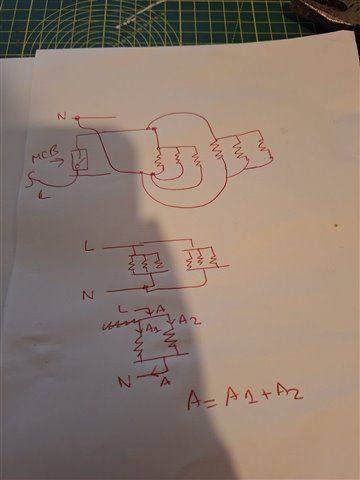
Am I correct in simplifying a ring circuit like this in theory? Assuming the loads are the same 1ohms and the distance between each load is the same as well.

Am I correct in simplifying a ring circuit like this in theory? Assuming the loads are the same 1ohms and the distance between each load is the same as well.
Not quite sure what you are asking.
Even radial circuits have loads in parallel.
The concept of a ring is that the resistance of the circuits is fairly constant throughout, although in fact the graph is a pretty flat elipse. The idea is that you have two circuits in parallel and as the resistance of one rises, the other one falls.
Unless you have a long thin ring (down a corridor, for example) they tend to use less copper than a radial.
Frankly, in some ways, they are more bother than they are worth.
Not quite sure what you are asking.
Even radial circuits have loads in parallel.
The concept of a ring is that the resistance of the circuits is fairly constant throughout, although in fact the graph is a pretty flat elipse. The idea is that you have two circuits in parallel and as the resistance of one rises, the other one falls.
Unless you have a long thin ring (down a corridor, for example) they tend to use less copper than a radial.
Frankly, in some ways, they are more bother than they are worth.
We're about to take you to the IET registration website. Don't worry though, you'll be sent straight back to the community after completing the registration.
Continue to the IET registration site